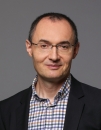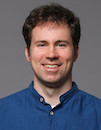Synchronous and Induction Machines
Data is displayed for academic year: 2023./2024.
Lecturers
Exercises
Laboratory exercises
Course Description
Fundamentals of electrical machines: energy balance, linear current density, MMF, torque, induced voltage. Two-axis theory of electrical machines. Space vectors and coordinate transformation. Synchronous permanent magnet machines: basic operating principle, construction, phasor diagram of SPM and IPM motors, operating characteristics, testing, application in electric traction. Synchronous reluctance motor. Induction machines: general steady-state equivalent circuit, space and current harmonic effects in induction machines, synchronous and asynchronous harmonic torque components, influence of slot skew, radial forces, noise and vibration, single-phase induction motor, production technology, testing, influence of power converter.
Study Programmes
University graduate
[FER3-HR] Audio Technologies and Electroacoustics - profile
Elective Courses
(1. semester)
(3. semester)
[FER3-HR] Communication and Space Technologies - profile
Elective Courses
(1. semester)
(3. semester)
[FER3-HR] Computational Modelling in Engineering - profile
Elective Courses
(1. semester)
(3. semester)
[FER3-HR] Computer Engineering - profile
Elective Courses
(1. semester)
(3. semester)
[FER3-HR] Computer Science - profile
Elective Courses
(1. semester)
(3. semester)
[FER3-HR] Control Systems and Robotics - profile
Elective Courses
(1. semester)
(3. semester)
[FER3-HR] Data Science - profile
Elective Courses
(1. semester)
(3. semester)
[FER3-HR] Electrical Power Engineering - profile
Elective Courses
(1. semester)
(3. semester)
Elective Courses of the Profile
(1. semester)
(3. semester)
[FER3-HR] Electric Machines, Drives and Automation - profile
(1. semester)
[FER3-HR] Electronic and Computer Engineering - profile
Elective Courses
(1. semester)
(3. semester)
[FER3-HR] Electronics - profile
Elective Courses
(1. semester)
(3. semester)
[FER3-HR] Information and Communication Engineering - profile
Elective Courses
(1. semester)
(3. semester)
[FER3-HR] Network Science - profile
Elective Courses
(1. semester)
(3. semester)
[FER3-HR] Software Engineering and Information Systems - profile
Elective Courses
(1. semester)
(3. semester)
[FER2-HR] Electrical Engineering Systems and Technologies - profile
Theoretical Course
(1. semester)
Learning Outcomes
- Describe the main parts of induction machines and brushless synchronous machines
- Derive and explain equations describing basic physical models of induction machines and brushless synchronous machines
- Apply physical models to analyze the inverter-fed induction machines and brushless synchronous machines
- Apply theoretical knowledge in laboratory conditions
Forms of Teaching
Lectures
classical lectures using blackboard in combination with PowerPoint slides
Exercisessolving numerical examples related to the content of the lectures
Partial e-learningposting study materials and communicating with students through the course website. Moodle quizzes for self-study.
Field worka visit to factories which produce and test electrical machines
Laboratorylaboratory exercises using electrical machines, and accompanying power supply and measuring equipment for the purpose of practical demonstration and confirmation of the acquired theoretical knowledge
Grading Method
| Continuous Assessment | Exam | |||||
|---|---|---|---|---|---|---|
| Type | Threshold | Percent of Grade | Threshold | Percent of Grade | ||
| Laboratory Exercises | 50 % | 15 % | 50 % | 15 % | ||
| Mid Term Exam: Written | 40 % | 30 % | 0 % | |||
| Final Exam: Written | 40 % | 30 % | ||||
| Final Exam: Oral | 25 % | |||||
| Exam: Written | 50 % | 50 % | ||||
| Exam: Oral | 35 % | |||||
Week by Week Schedule
- Energy balance in electromechanical systems.
- Linear current density and MMF. AC and polyphase MMF.
- Torque and induced voltage of an AC machine. Two-axis theory of electrical machines. Space vectors and coordinate transformation.
- Basic principle of operation and construction of permanent magnet synchronous motors.
- Phasor diagram for SPM and IPM motors.
- Operating characteristics of permanent magnet synchronous motors.
- Testing of permanent magnet synchronous motors. A machine with permanent magnets as a traction motor.
- Midterm exam
- Synchronous reluctance motor.
- Generalized induction machine equivalent circuit for steady state.
- Space and current harmonic effects in induction machines, synchronous and asynchronous harmonic torque components.
- Effect of slot skew, radial forces, noise and vibration.
- Induction generators (squirrel-cage, doubly-fed). Single-phase induction motors.
- Induction machine production technology. Testing of induction motors. Influence of power converter.
- Final exam
Literature
Radenko Wolf (1995.), Osnove električnih strojeva, Školska knjiga, Zagreb
For students
General
ID 222779
Winter semester
5 ECTS
L1 English Level
L1 e-Learning
45 Lectures
0 Seminar
15 Exercises
13 Laboratory exercises
0 Project laboratory
0 Physical education excercises
Grading System
85 Excellent
70 Very Good
60 Good
50 Sufficient


 Pristupačnost
Pristupačnost



